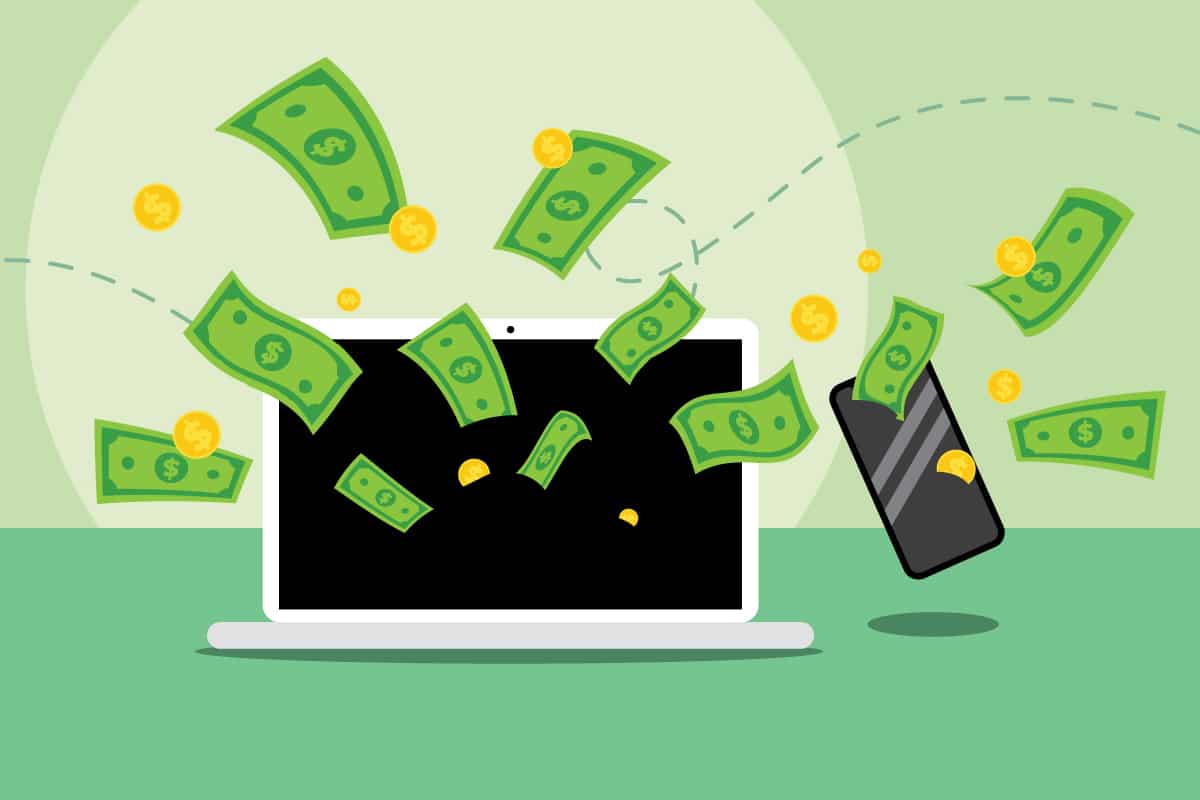Did you know that video marketing is one of the most popular marketing techniques used worldwide? In fact, 9 out of 10 marketers use video as a marketing tool.
Many believe that video marketing is unnecessarily expensive and is often the only reason marketers avoid it. However, the emergence of social media platforms, short-form video apps and websites, and video-sharing or streaming networks allow businesses to cut costs on video production.
We will cover B2B video marketing best practices and strategies in detail exploring the costs, tools, and techniques required for successful campaigns.
What is B2B Video Marketing?
B2B video marketing is a type of marketing that promotes video content demonstrating the qualities of your product or service. The most common goals for video marketing include raising brand awareness, increasing customer engagement, and improving conversion rates.
There are many different types of video marketing related to the B2B industry. The marketing department will choose the type of technique depending on the goals of the business, the type of product or service they are marketing, the complexity of their products, the audience preferences, etc. Here are the most popular B2B video marketing types:
- Explanainer videos – these videos explain how certain services and products work. They usually target particular problems or challenges and demonstrate how business solutions assist consumers. Common examples of explanatory videos in the B2B segment include “How To” videos and tutorials.
- Product videos – product videos revolve around the benefits and use cases of the product. Frequently, marketers will feature real customers or paid actors who showcase how they benefit from using a business’s product or service. Such videos are often portrayed in a natural environment.
- Animated videos – animated videos are very similar to explanatory videos. They often serve as tutorials and guides. The advantage of animated video production for B2B is cost efficiency. Many firms prefer to use hand-written or whiteboard-drawing videos that quickly grab viewers’ attention and do not need much editing or special effects.
- Testimonials – testimonials and customer feedback videos are some of the most important parts of B2B video marketing. B2B clients often rely on businesses that have collaborated with companies from a similar niche. They will often look for reviews online or trust their colleagues’ and friends’ recommendations. That is why high-quality testimonial videos are powerful methods for marketing a product or a service.


Tools and Platforms for B2B Video Marketing
We already mentioned that video marketing does not need to be expensive. Marketers no longer need to spend thousands of dollars on producing a 30-second video. Numerous platforms and social media networks now enable video marketing without any incurring costs.
Let’s cover three of the most popular channel types for B2B video marketing strategies that allow cost-efficient marketing tactics.
Short-form Video Platforms
Short-form video platforms, like TikTok and YouTube shorts, have become necessary parts of digital marketing. A lot of big brands use these platforms in their B2B inbound marketing strategies. Short-form video platforms allow creators to generate and publish video content for free. When optimizing your content for a platform’s algorithm you can reach a very specific audience suitable for your business products or services.
While TikTok is rarely considered a B2B marketing tool, marketers often find smart approaches to promoting their brand here. You won’t find product and service promotions on TikTok (at least not often), what marketers do is they raise brand awareness through sharing memes, interviews, and tutorials. Here are a few techniques marketers use for TikTok and YouTube Shorts (more on how to get YouTube Shorts views):
- Create memes that are related to your industry – for example, Semrush often shares memes that mock digital marketers’ daily work routine
- Showcase common challenges and pain points – think about what your prospects may find relatable, such as daily work struggles
- Conduct interviews and polls – ask random people outside what they think about your brand or product, or any other related question to your niche
- Employ interactive content – ask questions to your viewers, and let them share their stories with you
- Shoot “How to” videos – create quick and easy tutorial videos that solve everyday problems concerned with your industry
Social Media Platforms
B2B video marketing mostly relies on professional social media networks, such as LinkedIn. The platform grew to be one of the most dynamic atmospheres for experts within various fields. LinkedIn has tools for video marketing in the B2B segment, such as courses on LinkedIn Learning, or live webinars.
You can create a course on LinkedIn for various purposes:
- Course that explains how to use your product or service for solving a certain problem or issue
- A course that demonstrates the qualities of your products/services (if it is complex and needs special training)
- Tutorial on the most common issues that your B2B audience faces and how to solve them (do not promote your product in this course)
Additionally, you can create and host webinars on LinkedIn and invite all people who may find it interesting or useful. LinkedIn webinars allow you to create a professional LinkedIn network around your brand and meet people who could become your clients or partners in the future.
Alternatively, businesses also utilize Twitter’s vast audience reach and use it for their B2B video marketing purposes. However, their goal on Twitter is to raise brand awareness and improve their reputation online. Twitter cannot be used for product advertising services for B2B clients and is mostly seen as a tool for influencing decision-makers in the long term.


Streaming Platforms
Streaming platforms are the least popular means of video marketing in the B2B industry. The reason behind this is the fact that very few marketers know how to extract the benefits of streamers’ communities. Yes, conducting product demos and hosting QA sessions is a very obvious marketing technique you can use, but these platforms can offer more than that.
The most popular streaming services for the B2B segment are LinkedIn Live, Facebook and Instagram Live YouTube Live, Zoom, Google Meets, and Twitch. These services allow businesses to host various events, workshops, webinars, and online conferences. Using streaming platforms for B2B marketing helps brands establish thought leadership and industry authority.
Best Practices for Video Marketing B2B
The idea behind video marketing is very clear – to demonstrate the attractiveness of a brand, product, or service through a visual appeal. However, achieving target goals through video production is often a challenge for many marketing teams. Below we provide tips and best practices for B2B video marketing in 2024.
- Have a single goal: don’t set too many targets for your video. It is very difficult to create a marketing plan with numerous goals in mind. Choose a single aim: clicks to your website, conversions, and purchases, lead generation, or anything else suitable for your business needs.
- Set a budget: Before you choose your video marketing techniques, platforms, and tools, set your budget. The budget will help you decide on the most cost-efficient methods. Do you have enough budget to shoot a professional video? Do you need cheaper alternatives such as short-form videos, or client testimonials?
- Decide on the type of video: based on your audience’s needs and preferences choose a type of video for your marketing plan. Go for explainer videos if your product is complicated and your prospects need special training to use it. Choose testimonials if your niche is very competitive. Invest in tutorials and “How To” videos if there are challenges and problems that your product or service can solve effectively.
- Choose a platform: analyze available options where to publish your video. Go for social media if your prospects and clients actively use it for procurement purposes. Aim for short-form video platforms, like YouTube and TikTok, if they offer you a reach to your target audience. Go for video ads in Google or display ads on various websites if your audience is scattered around the web.
- Promote your video: After you create and publish your content make sure to invest in advertising and promotion. Track the analytics and observe which platforms yield the best results. If it is social media then advertise your video on LinkedIn, Facebook, and Instagram. If the results are better in short-form and/or video streaming platforms, you can place video ads for improved metrics.
FAQs on B2B Video Marketing
How do I promote my B2B video?
Promote your B2B video on LinkedIn through posts, LinkedIn learning, or LinkedIn Live. You can use Twitter, Instagram, or Facebook for similar purposes. Alternatively, you can invest in paid advertising on social media platforms. Additionally, you can use YouTube and TikTok with optimized hashtags and captions to increase engagement and viewership of your video content.
How long should a B2B video be?
Depending on the platform you choose B2B video can be between 15 to 40 seconds. Short-form video platforms, such as TikTok and YouTube Shorts prefer shorter videos, whereas LinkedIn, Twitter, and other social media websites let you publish longer videos. Make sure that your content is very specific and direct to the point – do not include unnecessary information that may bore viewers.
What makes B2B video content effective?
B2B video content is effective if it conveys the message in a visually appealing and direct way. The very first few seconds should grab the attention of the viewers and keep them engaged till the end of the video. Using captions (subtitles), and relevant hashtags increases the chance of effectiveness. Furthermore, video content must be aligned coherently and revolve around a single subject and a single marketing goal.
Is TikTok good for B2B marketing?
TikTok is mostly effective for B2C marketing, but B2B marketers use TikTok to increase brand awareness and online presence. The most common B2B marketing strategies on TikTok include creating memes, emotional and funny reels that viewers relate to, tutorials and how-to videos, etc. TikTok is more appropriate for brands and companies that target smaller businesses.
How does B2B video marketing add value?
The greatest value of B2B video marketing is increased engagement and enhanced brand image and reputation. Videos are more memorable than written content, hence they allow the viewers to remember and recognize your brand in the future. Furthermore, video content is best for educating your customers – offering them a solution to their problems and challenges.
Is YouTube effective for B2B?
Yes, YouTube is effective for the B2B industry. Many professionals refer to YouTube for tutorials, guides, overviews, and even research purposes. Placing informative, descriptive, and unique video content on YouTube can provide high rates of engagement and generate leads. YouTube Shorts is another tool for B2B video marketing that is concerned with increasing brand recognition across the web.




















